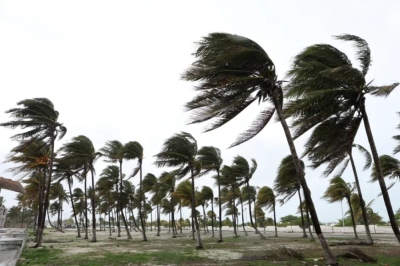
US Inflation Inches Up, Delaying Prospects of Fed Rate Cuts
The latest inflation report in the United States reveals a persistent burden on American consumers as prices continue their upward trend.
The Federal Reserve closely monitors these developments, particularly its preferred measure, the Personal Consumption Expenditures (PCE) price index, which indicated a 2.5% rise for the 12 months ending in February. This uptick marks a slight acceleration compared to January's 2.4% increase but aligns with FactSet consensus estimates. The driving force behind this rise was a notable 2.3% surge in energy prices last month, as reported by the Commerce Department.
Despite the deviation from the Fed's 2% inflation target, Federal Reserve Chair Jerome Powell remains relatively unperturbed. Speaking at an event hosted by the San Francisco Fed, Powell characterized the data as "pretty much in line with our expectations." He emphasized the positive aspect of data aligning with the central bank's projections.
However, within the report lies some encouraging signs. The core PCE index, which excludes volatile food and energy prices, demonstrated a slight deceleration to 2.8% from January's 2.9% annual rate. On a monthly basis, it moderated to 0.3% from January's 0.5%, meeting expectations. Additionally, the overall monthly pace of price increases slowed marginally to 0.3% from January's 0.4%, falling below economists' forecasts.
A notable observation is the disparity between the price increases of goods and services. While goods saw a monthly rise of 0.5%, outpacing services' 0.3% increase, the latter has been a primary driver of overall inflation in recent years. The Federal Reserve's significant rate hikes, bringing interest rates to a 23-year high, have had limited success in curbing service-side inflation. Labor shortages have been the primary catalyst for these price hikes, prompting employers to raise wages and subsequently increase prices.
In contrast to recent economic data suggesting a slowdown in consumer spending, the PCE data revealed an opposite trend. Consumer spending surged by 0.8% last month, marking the most substantial monthly rise in over a year compared to January's 0.2%. However, this surge may not be grounds for celebration. Chief economist Kathy Bostjancic of Nationwide noted that it underscores consumers' depletion of pandemic-related savings, evident in record-high credit card debt. While robust employment growth can support solid spending, consumers are ill-prepared for a weakening labor market scenario.
The latest inflation data is unlikely to alter the Federal Reserve's plans for future interest rate cuts. Fed officials, including Chair Powell, have signaled that achieving 2% inflation will be a gradual process. Governor Christopher Waller reinforced this stance in a recent speech titled "There’s Still No Rush," indicating a prudent approach to maintaining the current rate stance to ensure sustainable inflation levels. Fed policymakers continue to project three rate cuts this year, with investors anticipating the first in June.
In summary, the latest inflation report presents a mixed picture. While inflation edged higher and consumer spending surged, concerns persist regarding the sustainability of these trends and their implications for monetary policy. The Federal Reserve remains cautious, prioritizing a balanced approach to inflation management while navigating the complexities of the current economic landscape.
Trending
-
1 UK Tech Sector Secures a Third of European VC Funding in 2024
Azamat Abdoullaev -
2 France’s Main Problem is Socialism, Not Elections
Daniel Lacalle -
3 Fed Chair Jerome Powell Reports 'Modest' Progress in Inflation Fight
Daniel Lacalle -
4 AI Investments Drive 47% Increase in US Venture Capital Funding
Felix Yim -
5 The Future of Work: How Significance Drives Employee Engagement
Daniel Burrus





Comments